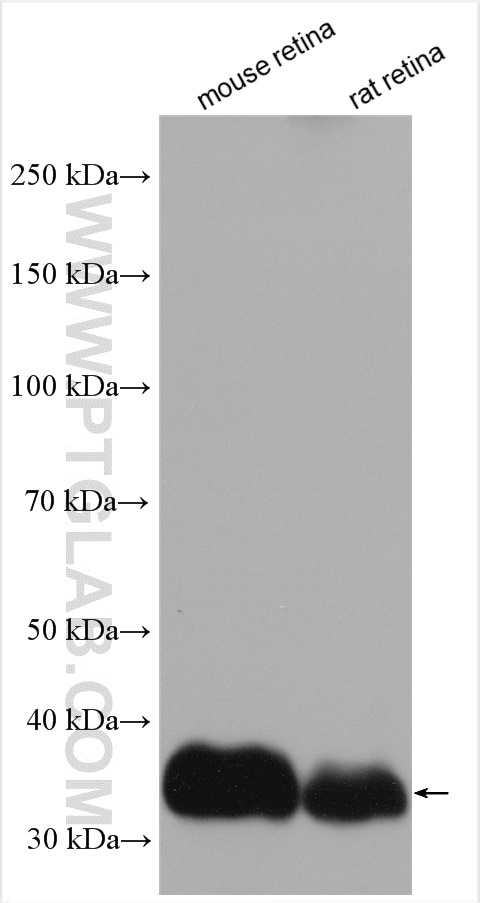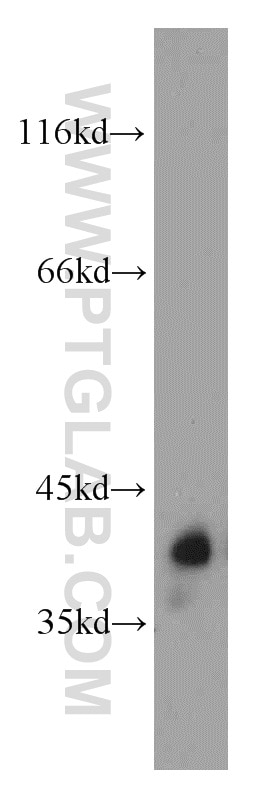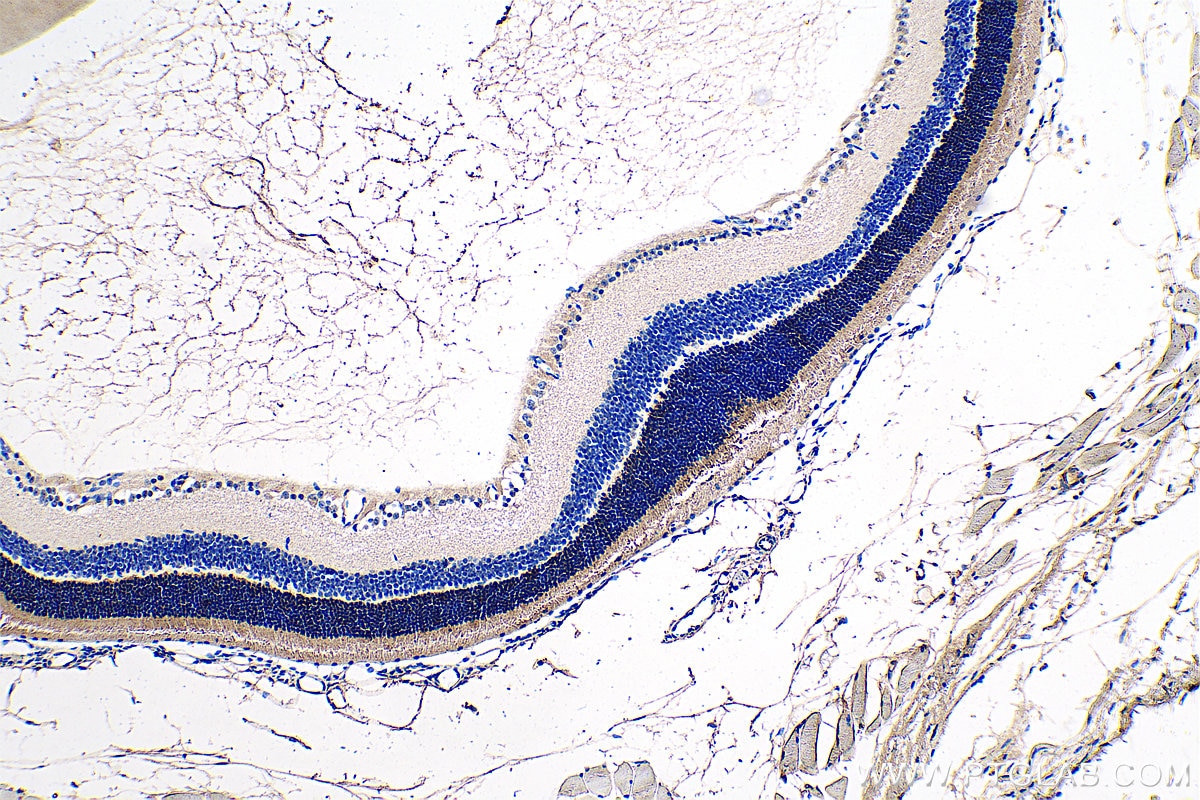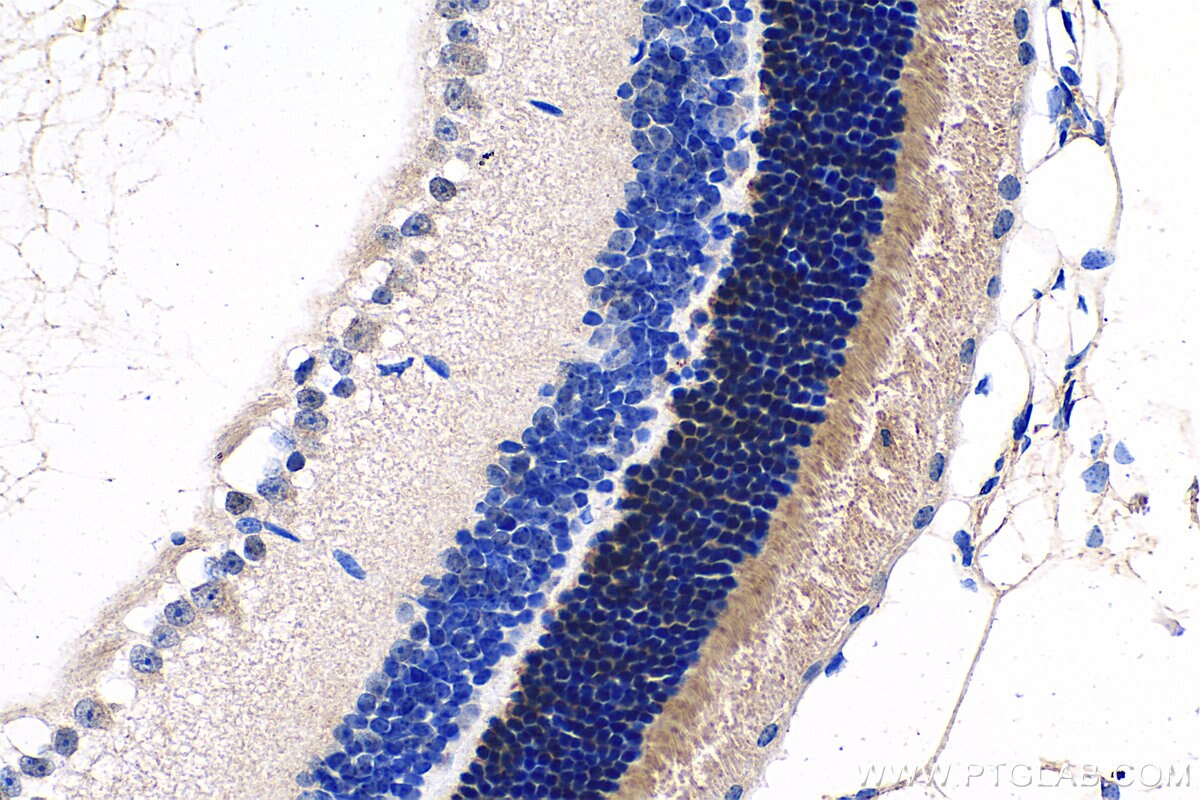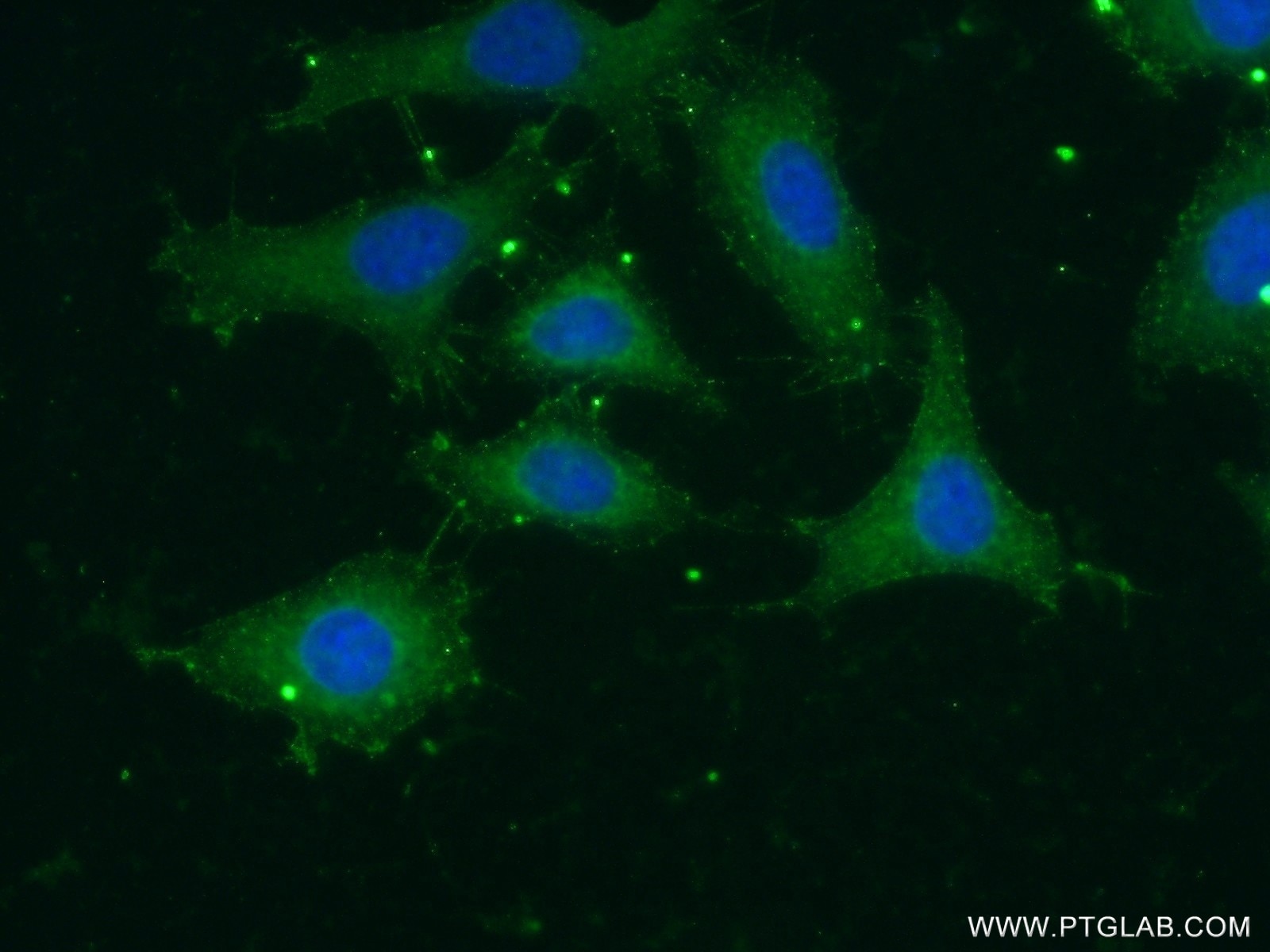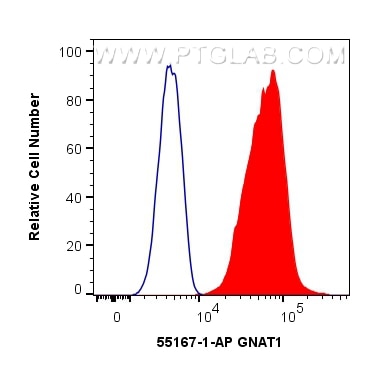Anticorps Polyclonal de lapin anti-GNAT1
GNAT1 Polyclonal Antibody for WB, IHC, IF/ICC, FC (Intra), ELISA
Hôte / Isotype
Lapin / IgG
Réactivité testée
Humain, rat, souris et plus (1)
Applications
WB, IHC, IF/ICC, FC (Intra), ELISA
Conjugaison
Non conjugué
N° de cat : 55167-1-AP
Synonymes
Galerie de données de validation
Applications testées
| Résultats positifs en WB | tissu rétinien de souris, tissu oculaire de souris, tissu rétinien de rat |
| Résultats positifs en IHC | tissu oculaire de souris, il est suggéré de démasquer l'antigène avec un tampon de TE buffer pH 9.0; (*) À défaut, 'le démasquage de l'antigène peut être 'effectué avec un tampon citrate pH 6,0. |
| Résultats positifs en IF/ICC | cellules HeLa |
| Résultats positifs en FC (Intra) | cellules HeLa, |
Dilution recommandée
| Application | Dilution |
|---|---|
| Western Blot (WB) | WB : 1:2000-1:10000 |
| Immunohistochimie (IHC) | IHC : 1:750-1:3000 |
| Immunofluorescence (IF)/ICC | IF/ICC : 1:50-1:500 |
| Flow Cytometry (FC) (INTRA) | FC (INTRA) : 0.40 ug per 10^6 cells in a 100 µl suspension |
| It is recommended that this reagent should be titrated in each testing system to obtain optimal results. | |
| Sample-dependent, check data in validation data gallery | |
Applications publiées
| WB | See 9 publications below |
| IHC | See 3 publications below |
| IF | See 1 publications below |
Informations sur le produit
55167-1-AP cible GNAT1 dans les applications de WB, IHC, IF/ICC, FC (Intra), ELISA et montre une réactivité avec des échantillons Humain, rat, souris
| Réactivité | Humain, rat, souris |
| Réactivité citée | poisson-zèbre, souris |
| Hôte / Isotype | Lapin / IgG |
| Clonalité | Polyclonal |
| Type | Anticorps |
| Immunogène | Peptide |
| Nom complet | guanine nucleotide binding protein (G protein), alpha transducing activity polypeptide 1 |
| Masse moléculaire calculée | 40 kDa |
| Poids moléculaire observé | 35-40 kDa |
| Numéro d’acquisition GenBank | NM_000172 |
| Symbole du gène | GNAT1 |
| Identification du gène (NCBI) | 2779 |
| Conjugaison | Non conjugué |
| Forme | Liquide |
| Méthode de purification | Purification par affinité contre l'antigène |
| Tampon de stockage | PBS with 0.02% sodium azide and 50% glycerol |
| Conditions de stockage | Stocker à -20°C. Stable pendant un an après l'expédition. L'aliquotage n'est pas nécessaire pour le stockage à -20oC Les 20ul contiennent 0,1% de BSA. |
Informations générales
GNAT1, also named as GNATR, belongs to the G-alpha family and G(i/o/t/z) subfamily. Guanine nucleotide-binding proteins (G proteins) are involved as modulators or transducers in various transmembrane signaling systems. Transducin is an amplifier and one of the transducers of a visual impulse that performs the coupling between rhodopsin and cGMP-phosphodiesterase. Defects in GNAT1 are the cause of congenital stationary night blindness autosomal dominant type 3 (CSNBAD3). This antibody is specific to GNAT1.
Protocole
| Product Specific Protocols | |
|---|---|
| WB protocol for GNAT1 antibody 55167-1-AP | Download protocol |
| IHC protocol for GNAT1 antibody 55167-1-AP | Download protocol |
| IF protocol for GNAT1 antibody 55167-1-AP | Download protocol |
| Standard Protocols | |
|---|---|
| Click here to view our Standard Protocols |
Publications
| Species | Application | Title |
|---|---|---|
iScience Identification of early-onset photoreceptor degeneration in transgenic mouse models of Alzheimer's disease. | ||
J Biol Chem Pathogenic Mutations in Retinitis Pigmentosa 2 Predominantly Result in Loss of RP2 Protein Stability in Human and Zebrafish. | ||
Sci Rep Loss of PRCD alters number and packaging density of rhodopsin in rod photoreceptor disc membranes. | ||
eNeuro Frmpd1 facilitates trafficking of G-protein transducin and modulates synaptic function in rod photoreceptors of mammalian retina |
